呵呵, 这几天看到社区里大家对如何在vc中调用WPF兴致很高, 现在我就带领大家按部就班来实现它.废话不说了, 开始.
WPF是微软主推的新一代桌面程序开发技术, 它极大加快了程序界面开发,也增强了界面的用户体验,至于详细的介绍大家可以google, 本文主要还是介绍如何在vc中处理wpf数据和事件.开发工具嘛vs2008+sp1+[Blend].
1.新建一个项目MFCHostWpf, 建立2个工程, 一个为vc对话框的工程MFCDlgDemo,另一个为C#普通应用程序的工程WPFDemo.如图所示:
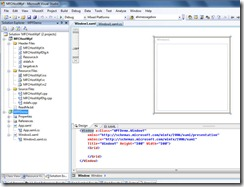
2.分别运行2个工程后, 程序截图如下:
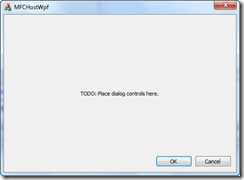
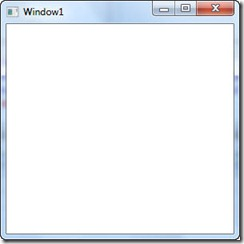
3.修改WPF工程以便MFC工程调用, 具体如下:
3.1.删除WPF工程中的 App.xaml和App.xaml.cs两个源文件.
3.2.双击WPF工程的Properties(属性), 选择Application(应用程序)选项卡, 将Output type(输出类型)下拉框选为Class Library(类库). 保存后关闭. 如图所示:
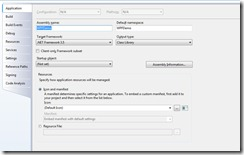
4.接下来修改MFC工程以便调用WPF组件, 具体如下:
4.1.右击MFC工程, 选择弹出菜单的Properties(属性), 在Configuration Properties/General/Common Language Runtime support中选择Common Language Runtime support(/clr), 保存关闭后按F7编译. 如图所示:

4.2.重新右击MFC工程, 选择"工程属性", 在Common Properties中, 点击"Add New Reference", 在".net"选项卡下添加如下引用PresentationCore, PresentationFramework, System, System.Core, Systems.Data, Systems.Data.DataSetExtensions, Systems.Xml, System.Xml.Linq, WindowsBase. (p.s. 具体引用一定要和WPF工程中的引用一致),保存后退出, 如图所示:
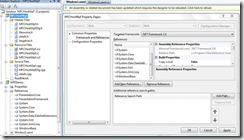
4.3.重新选择"工程属性", 在Common Properties中, 点击"Add New Reference", 在"Project"选项卡下选择WPFDemo工程, 选择"Ok"后保存退出, 如图所示:
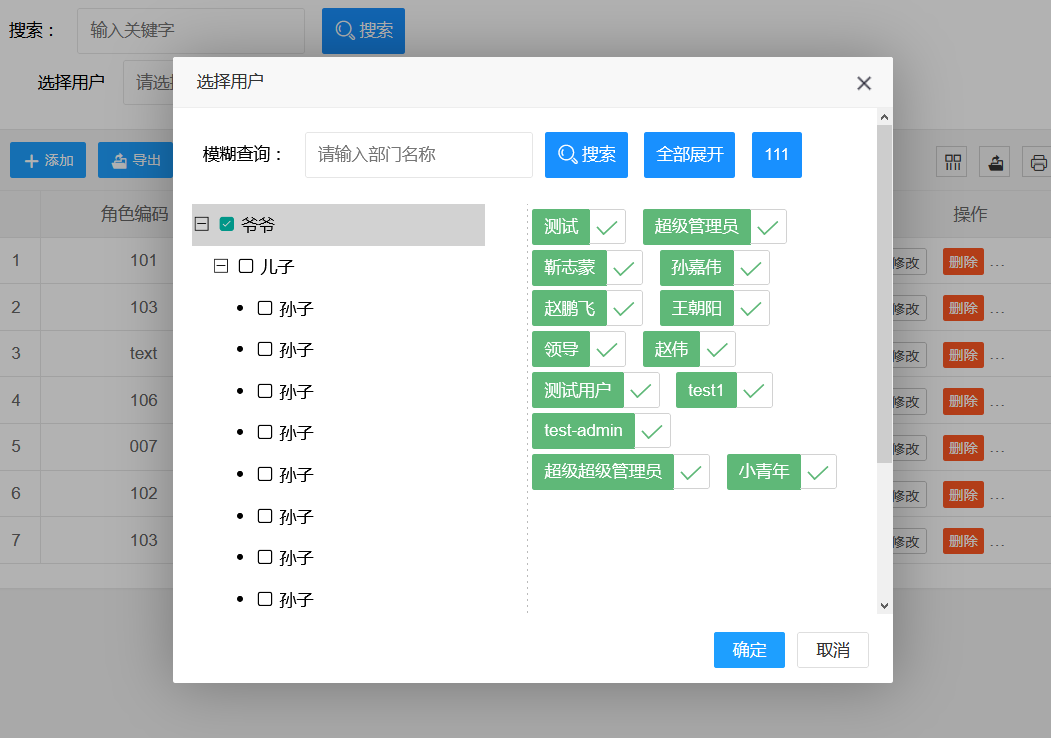
4.4.建立一个CLI类CHostWPFWnd, 代码如下:
//HostWPFWnd.h
#pragma once
using namespace System;
using namespace System::Windows;
using namespace System::Windows::Interop;
using namespace System::Runtime;
using namespace WPFDemo;
public ref class CHostWPFWnd
{
public:
CHostWPFWnd(void){};
~CHostWPFWnd(void){};
protected:
!CHostWPFWnd(){};
public:
static Window1^ hostedWnd;
static HWND hWnd;
};
HWND GetHwnd(HWND hwnd = NULL);
//HostWPFWnd.cpp
#include "StdAfx.h"
#include "HostWPFWnd.h"
HWND GetHwnd(HWND hwnd)
{
CHostWPFWnd::hostedWnd = gcnew Window1();
WindowInteropHelper^ wih = gcnew WindowInteropHelper(CHostWPFWnd::hostedWnd);
wih->Owner = IntPtr(hwnd);
CHostWPFWnd::hWnd = (HWND) wih->Handle.ToPointer();
return CHostWPFWnd::hWnd;
}
4.5.在MFC工程的App文件CMFCHostWpfApp中添加CLI类的引用#include “HostWPFWnd.h”, 在App的InitInstance函数里, 修改如下代码:
CMFCHostWpfDlg dlg;
m_pMainWnd = &dlg;
INT_PTR nResponse = dlg.DoModal();
if (nResponse == IDOK)
{
// TODO: Place code here to handle when the dialog is
// dismissed with OK
}
else if (nResponse == IDCANCEL)
{
// TODO: Place code here to handle when the dialog is
// dismissed with Cancel
}
为:
::GetHwnd();
if (CHostWPFWnd::hostedWnd)
{
CHostWPFWnd::hostedWnd->ShowDialog();
}
4.6.通过以上5步, 我们已经成功在MFC工程调用WPF, 按F7编译后, F5运行, 效果如下:
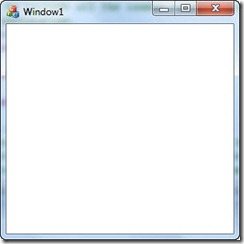
ok, 相信细心的哥们已经发现这个运行出来的Dlg的程序图标已经换为咱们熟悉的MFC默认icon. O(∩_∩)O~. (p.s. 注意启动的是MFC工程, 应将MFCDemo设为首选项, 具体是右击MFCDemo, 选择Set as StartUp Project).
4.7.接下来, 我们在WPF工程中定义一个实现INotifyPropertyChanged 接口的类TestModel, 里面有个int字段TestValue, 添加一个Button和一个TextBox, 并添加一个Click事件, 具体代码如下:
//cs
using System;
using System.Collections.Generic;
using System.Linq;
using System.Text;
using System.Windows;
using System.Windows.Controls;
using System.Windows.Data;
using System.Windows.Documents;
using System.Windows.Input;
using System.Windows.Media;
using System.Windows.Media.Imaging;
using System.Windows.Navigation;
using System.Windows.Shapes;
using System.ComponentModel;
namespace WPFDemo
{
/// <summary>
/// Interaction logic for Window1.xaml
/// </summary>
public partial class Window1 : Window
{
public class TestModel : INotifyPropertyChanged
{
public TestModel()
{
}
private int _testValue = 0;
public int TestValue
{
get { return _testValue; }
set
{
_testValue = value;
OnPropertyChanged("TestValue");
}
}
// Declare the event
public event PropertyChangedEventHandler PropertyChanged;
// Create the OnPropertyChanged method to raise the event
protected void OnPropertyChanged(string name)
{
PropertyChangedEventHandler handler = PropertyChanged;
if (handler != null)
{
handler(this, new PropertyChangedEventArgs(name));
}
}
}
public Window1()
{
InitializeComponent();
}
private TestModel test;
public TestModel Test
{
get { return test; }
set { test = value; }
}
public delegate void ButtonClickHandler();
public event ButtonClickHandler ClickEvent;
private void _btnTest_Click(object sender, RoutedEventArgs e)
{
//
ClickEvent();
}
}
}
//xaml
<Window x:Class="WPFDemo.Window1"
xmlns="http://schemas.microsoft.com/winfx/2006/xaml/presentation"
xmlns:x="http://schemas.microsoft.com/winfx/2006/xaml"
Title="Window1" Height="300" Width="300">
<Grid>
<TextBox Height="23" HorizontalAlignment="Left" Margin="10,10,0,0" Name="_txtValue" VerticalAlignment="Top"
Width="120" />
<Button Height="23" Margin="136,10,67,0" Name="_btnTest" VerticalAlignment="Top" Click="_btnTest_Click">Test
</Button>
</Grid>
</Window>
————————————————
版权声明:本文为CSDN博主「muzizongheng」的原创文章,遵循 CC 4.0 BY-SA 版权协议,转载请附上原文出处链接及本声明。
原文链接:https://blog.csdn.net/muzizongheng/article/details/5565170
4.8.这一步我们把_txtValue的Text属性绑定到我们上面定义的TestValue字段, 把_txtValue设为ReadOnly, 并修正下Dlg显示出来的位置, 修改后的xaml代码为:
<TextBox Height="23" HorizontalAlignment="Left" Margin="10,10,0,0" Name="_txtValue" VerticalAlignment="Top" Width="120"
Text="{Binding Test.TestValue, ElementName=window, Mode=OneWay}" IsReadOnly="True" />
4.9.接下来我们自定义一个event, 在Button的Click事件中触发此事件, 具体代码如下:
public delegate void ButtonClickHandler();
public event ButtonClickHandler ClickEvent;
private void _btnTest_Click(object sender, RoutedEventArgs e)
{
//
ClickEvent();
}
4.10.然后我们在MFC通过自定义一个Add方法, 并在方法中通过CLI修改WPF中的TextValue字段, 然后通过CLI把此Add方法加到自定义event中. 修改后代码如下:
//HostWPFWnd.h
#pragma once
using namespace System;
using namespace System::Windows;
using namespace System::Windows::Interop;
using namespace System::Runtime;
using namespace WPFDemo;
public ref class CHostWPFWnd
{
public:
CHostWPFWnd(void){};
~CHostWPFWnd(void){};
protected:
!CHostWPFWnd(){};
public:
static Window1^ hostedWnd;
static HWND hWnd;
};
HWND GetHwnd(HWND hwnd = NULL);
void Add(); //Increase TestValue;
//HostWPFWnd.cpp
#include "StdAfx.h"
#include "HostWPFWnd.h"
HWND GetHwnd(HWND hwnd)
{
CHostWPFWnd::hostedWnd = gcnew Window1();
CHostWPFWnd::hostedWnd->ClickEvent += gcnew Window1::ButtonClickHandler(Add);
WindowInteropHelper^ wih = gcnew WindowInteropHelper(CHostWPFWnd::hostedWnd);
wih->Owner = IntPtr(hwnd);
CHostWPFWnd::hWnd = (HWND) wih->Handle.ToPointer();
return CHostWPFWnd::hWnd;
}
void Add()
{
CHostWPFWnd::hostedWnd->Test->TestValue++;
}
4.11.F7编译后, F5运行, 结果如下:
